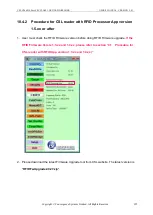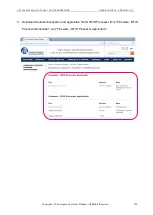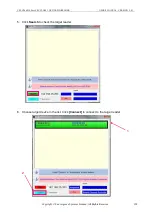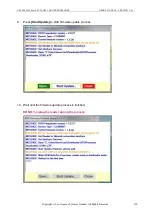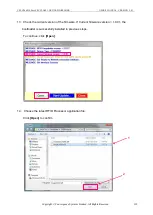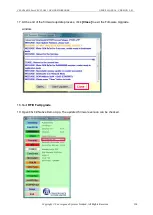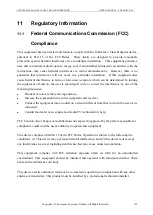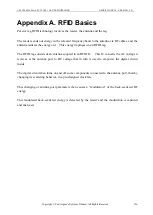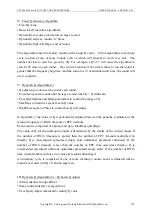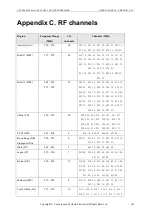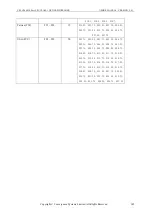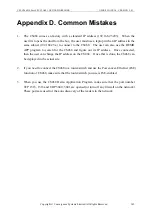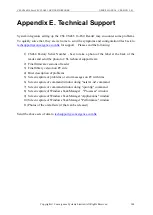
CSL CS468 16-Port EPC CLASS 1 GEN 2 RFID READER
USER'S MANUAL, VERSION 2.0.1
Copyright © Convergence Systems Limited, All Rights Reserved
139
Algorithm 2 is identical to algorithm 1 with the sole exception that a queryAdjust command is
used to adjust the value of Q rather than a query command.
Read rate performance is increased relative to algorithm 1 because a) the query Adjust
command is shorter, and b) new rounds are not initiated each time the value of Q changes,
reducing the frequency of duplicate tag reads in the course of an inventory cycle.
Note though that algorithm 1 may deliver superior performance when reading small fast
moving (or changing) tag populations due to the increased frequency with which query
Commands are issued.
11)
Dynamic Q Algorithm (3)
–
Dynamic Q Thresh
• New Q adjustment algorithm.
• Uses Qstart,Qmax and Qmin parameters to control the range of Q.
• QueryReps are not limited to a maximum numb
er on a round.
• Single threshold multiplier used to control Q adjustment.
• QueryAdjust command used to modify Q value as in Algorithm 2.
In algorithm 3, the value of Q is adjusted based on the continuous evaluation of the relative
frequency of RN16 timeouts vs EPC timeouts.
An inventory cycle consists of a single round initiated by a Query command.
Following the query command, up to ((2^^Q)-1) queryRep commands are issued.
If in the course of operation the number RN16 timeouts exceeds the adjusted number of EPC
timeouts by a calculated threshold, the value of Q is decremented (presumed empty slots
outnumber presumed collisions). If the adjusted number of EPC timeouts exceeds the number
of RN16 timeouts by a calculated threshold, the value of Q is incremented (presumed collisions
outnumber presumed empty slots). While the relative number of RN16 time outs vs the
adjusted number of EPC time outs falls within the threshold, Q is unchanged.
When the value of Q changes, or if all slots under the current Q value have been inventoried,
the slot counters of the participating tag population is refreshed using a queryAdjust command.
The calculated threshold equals the current value of Q times a multiplier (set by default to 1).
The EPC timeout count is adjusted by Rtot, the ratio of (EPC timeout / RN16 timeout).
An inventory cycle is terminated when all slots have been checked with Q = Qmin and no tags
have been read.
Read rate performance is increased relative to algorithm 2 because a) Q remains unchanged
while well matched to the population, b) Q value is changed more quickly when it is not well
matched, and c) on the average, fewer queryAdjust commands are issued.

